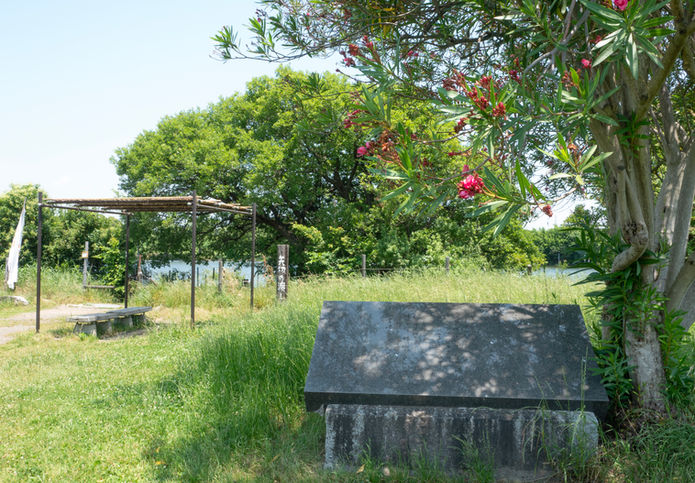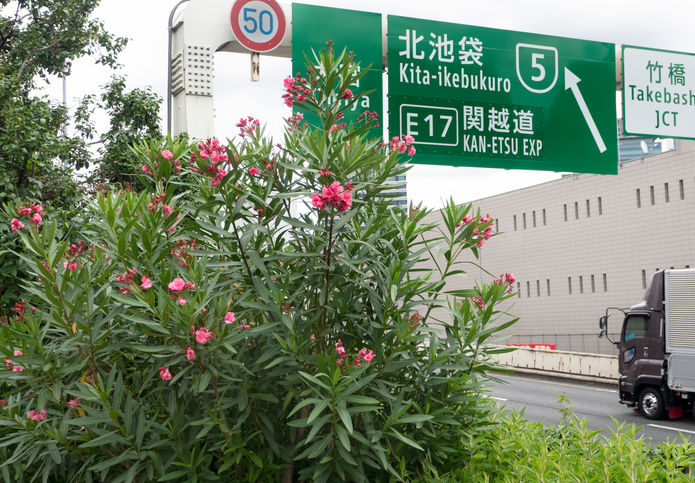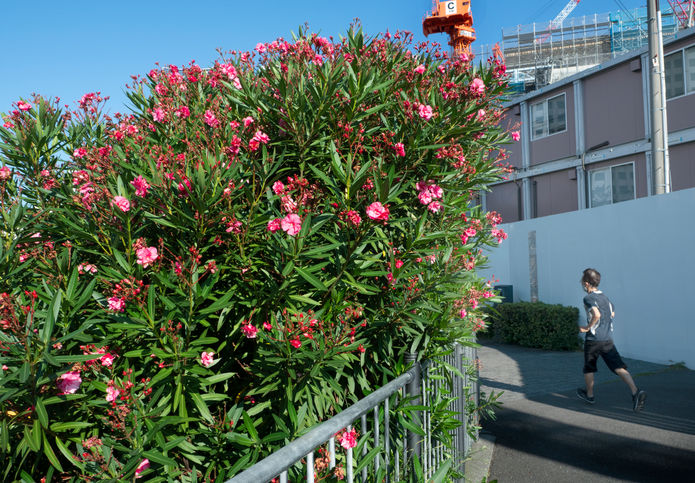Ⓒ Mai Ishida
Oleander
2018-ongoing
The oleander remains unchanged, simply existing, breathing, and continuing to bloom. People live beside these living things.
Tokyo
Yokohama , Kanagawa Prefecture
Kawasaki , Kanagawa Prefecture
Other towns in Kanagawa
Hiroshima & Nagasaki
Chiba
Other regions
Oleander is a summer flower. It is said to have been introduced to Japan via Nagasaki during the mid-Edo period. Their trees are resistant to drought and air pollution, making them suitable for use as street trees and firebreak trees. Furthermore, oleander is often planted around schools and parks because it can be used as a buffer zone to mitigate noise and exhaust fumes and prevent the scattering of dust. In areas affected by pollution or atomic bombings, oleander is said to have grown immediately even when other trees died. Oleander contains a toxic substance called oleandrin.All parts—flowers, leaves, branches, roots, and fruit—are toxic, as are the surrounding soil and smoke from burning the wood.Even when composted, toxicity persists for one year. On the other hand, the toxins in oleander leaves and bark are also used in pharmaceuticals. Oleander is often planted as a street tree or firebreak tree because the opening and closing of stomata on the underside of its leaves is believed to help purify the air. Recently, considering oleander's toxicity, many voices call for its removal. Often planted along factories, schools, and parks built during the Showa period, it is frequently cut down during building renovations due to aging structures, relocations for business restructuring, or evictions. Through the tides of time, it has been perceived both positively and negatively, yet oleander remains unchanged, simply existing and blooming. Oleander is a “human-like plant.” It is me, and it is you.









































































































